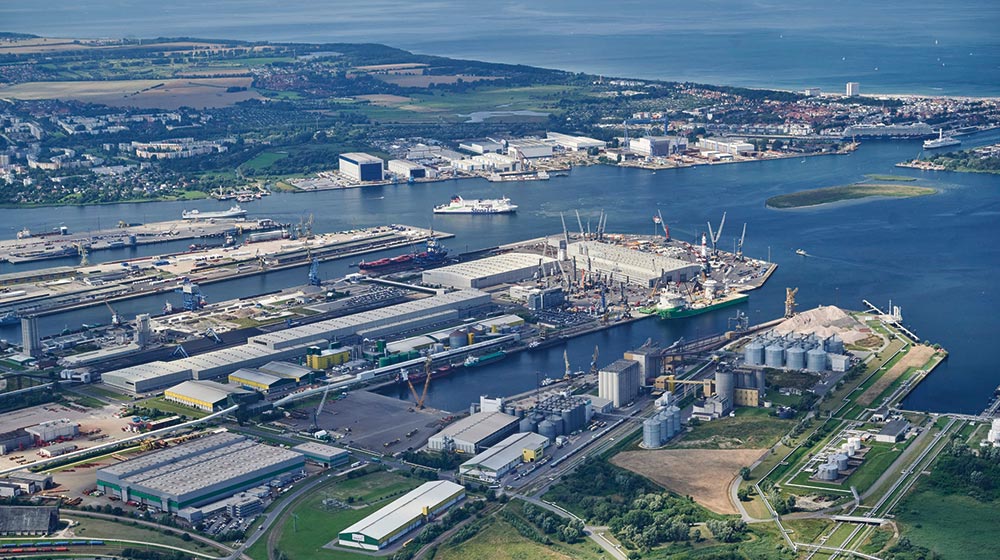
Benjamin Klare
New handling record for Germany’s largest Baltic port: last year, 28.68 million metric tons of cargo passed through the seaport at Rostock, a 14% increase on 2020. Dr. Gernot Tesch, Managing Director of Rostock Port, said on Friday: “What’s remarkable about the result is, firstly, that all four cargo types contributed to growth and, secondly, that we also managed to expand considerably compared to the pre-pandemic year of 2019 – by a respectable 11.7%.”
The strongest growth was seen in rolling cargo in ferry and ro-ro traffic. 18 million metric tons of cargo was handled (an increase of 18%), a new record. Rolling cargo made up 63% of all cargo handled at Rostock seaport last year.
Bulk cargo accounted for 6.9 million metric tons, 2% above the previous year’s level. At 3.4 million metric tons a year, grain is the main type of bulk cargo that passes through the port of Rostock. Liquid cargo increased by 27% to 3.1 million metric tons in 2021. This included biodiesel, gasoil, crude gasoline (naphtha), and crude oil.
At 680,000 metric tons, high-value-added breakbulk cargo increased by 12% over the previous year. Container cargo, zinc, and cellulose all increased, while project cargo declined slightly. Significant growth rates were also recorded in the handling of intermodal loading units in combined transport (CT). The terminal operated by Rostock Trimodal GmbH recorded a 33% increase to 121,000 units. Next Thursday, the seaport of Kiel will also be publishing its cargo handling figures for the past year.
Do you have a special request?
Contact us if you would like to learn more about the efficiency of German logistics!